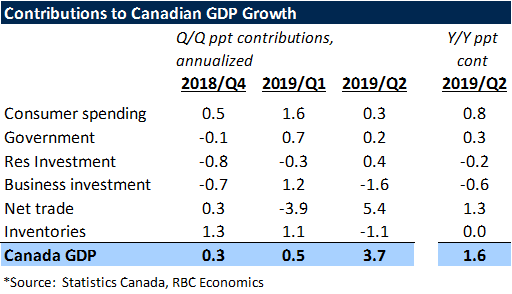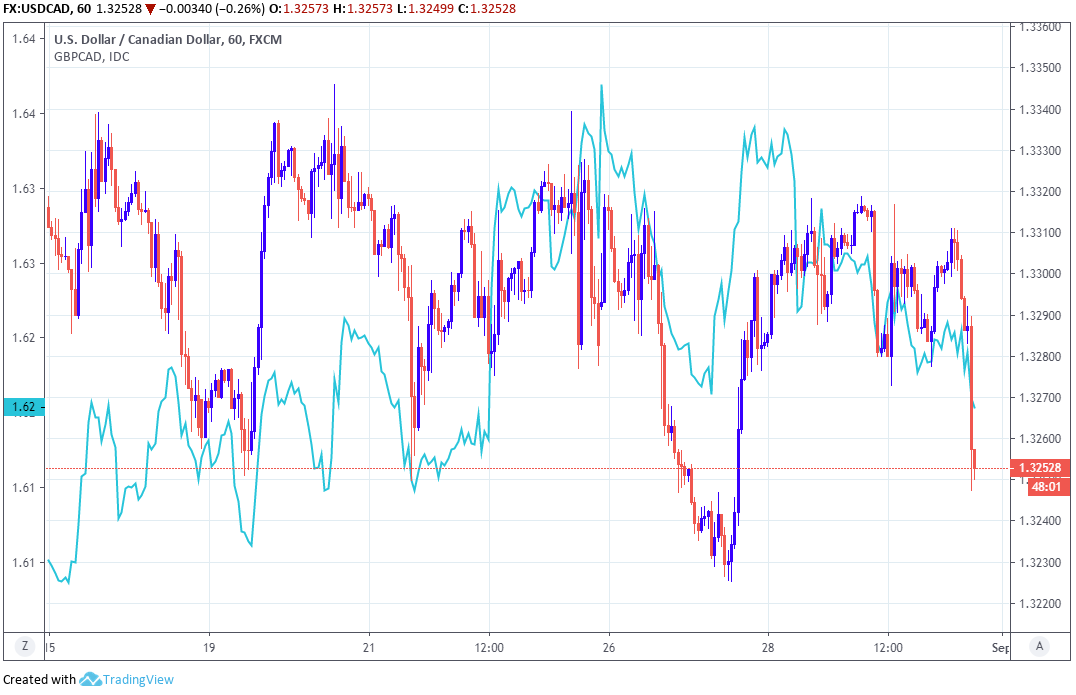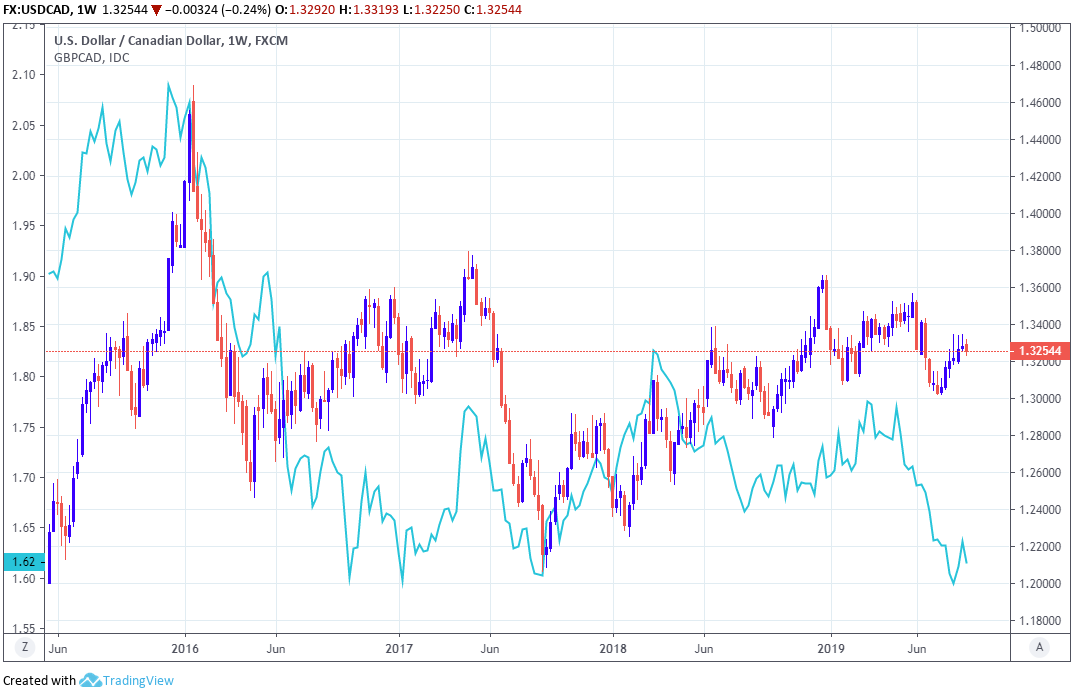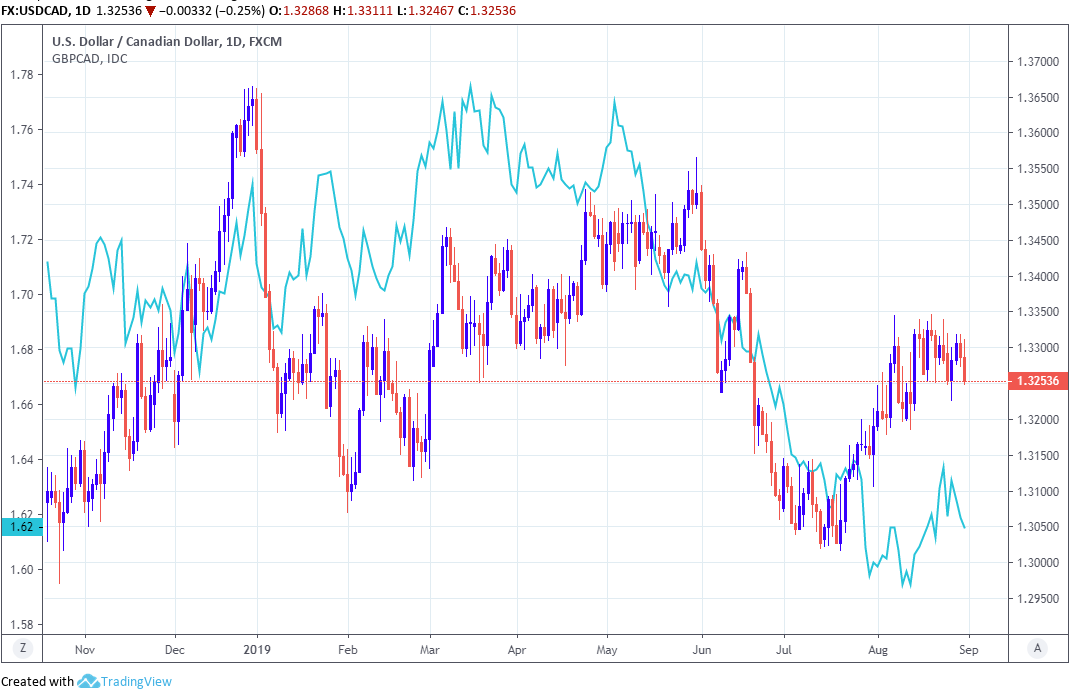The Canadian Dollar Raises the Roof on Blowout Growth Figures
- Written by: James Skinner

Image © Bank of Canada, Reproduced Under CC Licensing
- CAD raises roof after GDP growth blowout shocks market.
- June growth beats expectations, bodes well for third quarter.
- Economy grows at annualised 3.7% during second quarter.
- Numbers underline Canada's recent economic exceptionalism.
- CAD outlook hinged on BoC words next week, interest rate story.
The Canadian Dollar raised a proverbial roof Friday after official data showed the economy growing much faster during the second quarter than the market had dared imagine, although much about the outlook for the Loonie depends on next week's response from the Bank of Canada (BoC).
Canada's economy grew by an unchanged 0.2% in June, according to Statistics Canada figures, when the economist consensus had been for it to slow to 0.1%. This contributed toward what was a stellar performance for the quarter overall, which saw that saw GDP rise 0.9% and at an annualised pace of 3.7%. The upwardly-revised Bloomberg consensus for the annualised figure was just 3%.
Notably, the economy achieved a best-in-class performance despite a steep 1.6% decline in business investment and a slowdown in consumer spending, which rose just 0.1% for the quarter overall. The expansion was led by the trade sector, with exports up a strong 3.7% following two quarters of contraction and amid an increase in shipments of oil across the border to the U.S.
"The Canadian economy came roaring back following a couple of quarters of near stagnation. Second quarter GDP surged to 3.7%, ahead of even our above-consensus expectations, and following a revised 0.5% (0.4% prev.) advance in Q1. Growth showed up where we had expected in exports and residential investment, but showed up with more vigour than our forecast from last week," says Royce Mendes, an economist at CIBC Capital Markets.

Above: RBC Capital Markets table showing quarterly contributions to Canadian GDP growth.
Currency markets care about the GDP data because it reflects rising and falling demand within the economy, which has a direct bearing on consumer price inflation, which is itself important for questions around interest rates. And interest rates themselves are a raison d'être for most moves in exchange rates.
Changes in interest rates are normally only made in response to movements in inflation, which is sensitive to growth, but impact currencies because of the push and pull influence they have over capital flows. Capital flows tend to move in the direction of the most advantageous or improving returns, with a threat of lower rates normally seeing investors driven out of and deterred away from a currency while rising rates have the opposite effect.
"The stronger-than-expected Q2 increase was entirely due to a huge 5.4 percentage point add to growth from net trade. That more-than-reversed a big drag from net trade in Q1 – and is clearly unsustainable going forward, even without considering growing external headwinds from slower global growth, an escalating US-China trade war, Brexit uncertainty," says Nathan Janzen, an economist at RBC Capital Markets.

Above: USD/CAD rate shown at hourly intervals alongside GBP/CAD (aqua green, left axis).
"This is the sell zone in USDCAD. I am optimistic on oil as the Saudis seem to have put in a bottom in the $50/$52 area. Meanwhile, Canadian rates are getting close to US rates on some parts of the curve (1y1y Canada is higher, than USA, actually) so the argument for the USD as the only yielder is getting less persuasive," says Brent Donnelly, a trader at HSBC. "I like short USDCAD here (1.3312) with a stop at 1.3362...If this is the top, there is a chance to make 250 points on the trade."
Friday's data is especially important to the outlook for the Canadian Dollar because the latter has enjoyed a strong run higher in recent months off the back of perceptions that its commodity-exposed economy has been best-in-class even in the face of a renewed slowdown in global growth and another escalation of the U.S.-China trade war. The Loonie is up 3% gain over the U.S. Dollar for 2019 and more than 7% over Pound Sterling.
The Canadian Dollar outlook is hinged on whether a resilient economy will enable the Bank of Canada to leave its interest rate unchanged at 1.75% after the Federal Reserve (Fed) announces its next anticipated rate cut in September, and as economies elsewhere grapple with their own slowdowns. Financial markets are betting the Fed rate also falls to 1.75% by year-end and that Pound Sterling gets crushed by a 'no deal' Brexit in October.
"The Q2 report will do nothing to alleviate concerns that an increasingly uncertain external growth backdrop will slow the Canadian economy going forward. We continue to expect the Canadian central bank will follow other global peers with a rate cut. Probably not at next week’s policy decision but with the risks tilted to an earlier cut than the Q1-2020 move we have in our current base case," says RBC's Janzen.
Above: USD/CAD rate shown at daily intervals alongside GBP/CAD (aqua green, left axis).
The BoC has already described strength in the second quarter as "temporary" and emphasised risks to the outlook, but has otherwise stuck to its guns as far as guidance goes, signalling that no change in its interest rate is likely in the short-term. It says the 1.75% cash rate is "accomodative" for the economy and that it will pay particular attention to "developments in the energy sector and the impact of trade conflicts on the prospects for Canadian growth and inflation" when making future rate decisions.
This is in contrast to the outlook for interest rates in almost all other parts of the developed world. Only central banks in Norway and Sweden have anything like an appetite to lift rates while all the rest of them are either already cutting borrowing costs in an effort to support their economies, or are expected to do so over the coming months. Canadian bonds and the Loonie have become more attractive to international investors who're searching for yield as a result, but there are risks lurking up ahead.
"While general USD strength and weaker equities have pulled USD/CAD higher (grey and orange bars respectively), rate dynamics have been doing all of the work in pulling it back down (dark blue bars). Without the aggressive narrowing of 2y spreads in Canada’s favour over the last four months, we estimate USD/CAD would be 3-4% higher. That may be helpful for those who have a much more dovish view of the BoC than us," says Elsa Lignos, head of FX strategy at RBC Capital Markets. "We remain tactically short EUR/CAD."

Above: USD/CAD rate shown at weekly intervals alongside GBP/CAD (aqua green, left axis).
Meanwhile, interest in selling the Pound-to-Canadian-Dollar rate has risen since Wednesday morning when Prime Minister Boris Johnson sought to curtail a rebellion among anti-Brexit MPs by attempting to arrange the closure of parliament between early September and the middle of October in what Downing Street says is a legitimate move that has domestic purposes, but which critics claim is an attempt to force through a 'no deal' Brexit.
One consequence of Johnson's move if it goes through is that opposition and anti-Brexit MPs from other parties in parliament, including the governing Conservative Party, will have less time with which they could attempt to pass legislation that prevents the UK from leaving the EU on October 31. Sterling had rallied at the opening of the holiday-shortened UK week amid speculation that those MPs had the numbers to force Johnson into requesting an extension of the Article 50 negotiating period.
Some MPs from the governing Conservative Party had been conspiring with the opposition and members of other groups in order to prevent PM Johnson from taking the UK out of the EU without formal arrangements, which would severely damage his hand in negotiations aimed at getting the EU to agree changes to the withdrawal agreement struck with former PM Theresa May. Johnson is seeking those changes while claiming he'll leave without a deal if necessary, which could be economically damaging for not only the UK, but also the struggling Eurozone and ailing German economies.
The EU withdrawal agreement has a long list of serious flaws, according to its critics among both Brexit-supporting and anti-Brexit MPs, but most controversial of which is the so-called Northern Irish 'backstop'. Johnson is aiming at having it removed from the treaty because it could ultimately force lawmakers into choosing between a technical breakup of the UK or allowing all of the country to become trapped in the EU's legislative and regulatory orbit on a potentially indefinite basis without any influence or control over those things.
Time to move your money? Get 3-5% more currency than your bank would offer by using the services of foreign exchange specialists at RationalFX. A specialist broker can deliver you an exchange rate closer to the real market rate, thereby saving you substantial quantities of currency. Find out more here.
* Advertisement





